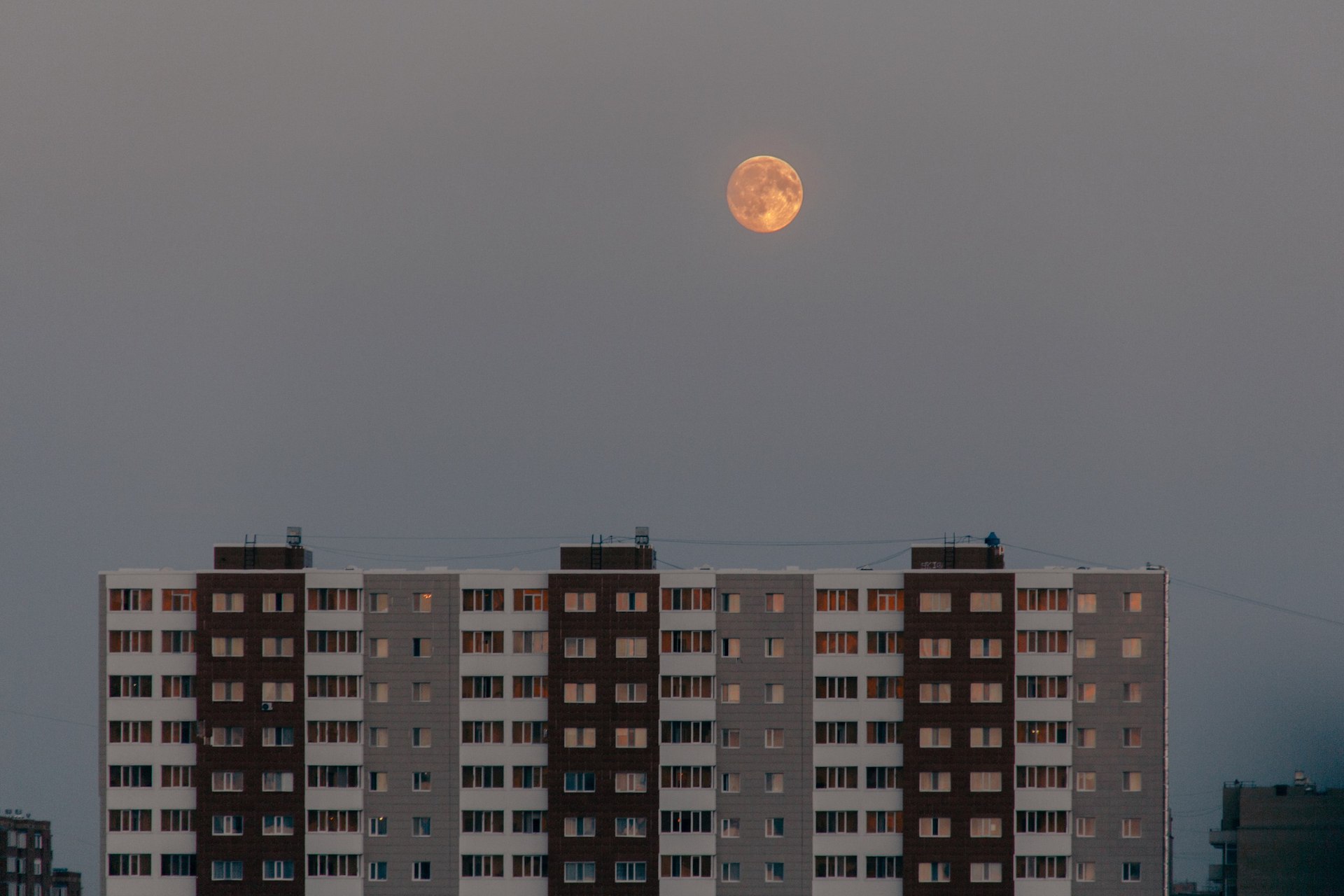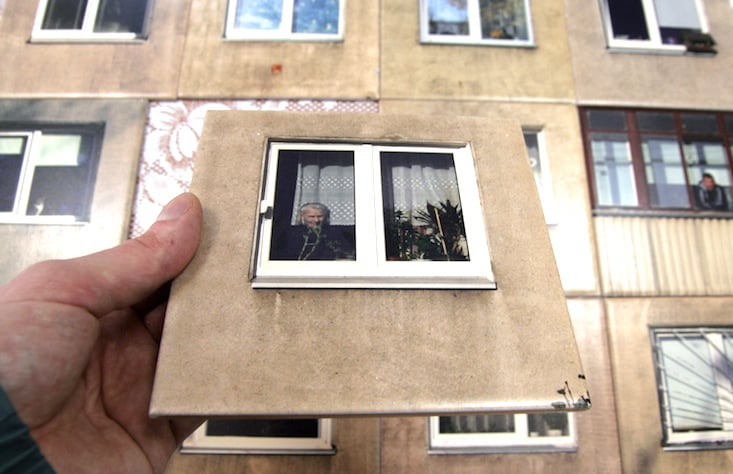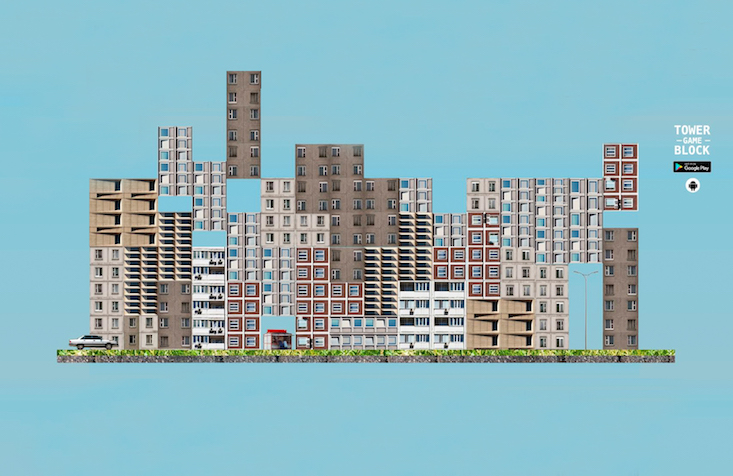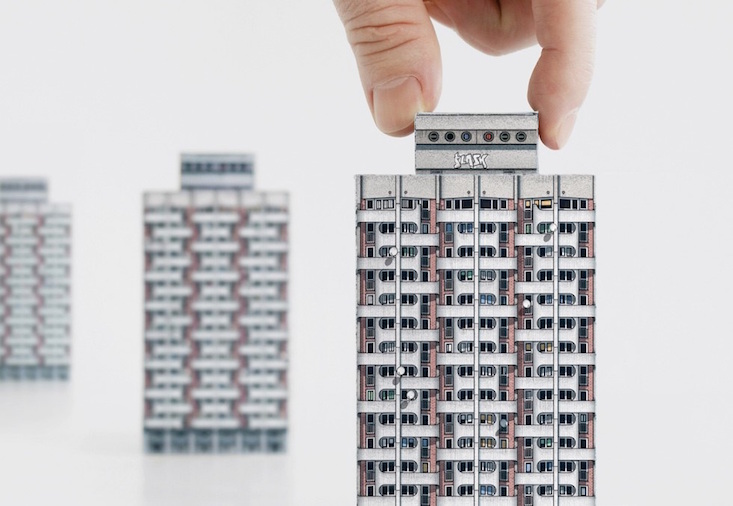The allure of the tower block: what keeps us coming back to images of post-Soviet mundanity?

In this month’s On our radar column, we ask: where does our fascination for images of the mundane, everyday, and domestic side of post-Soviet life come from?
At The Calvert Journal, we try to offer a sense of the sheer diversity of life in the New East. In recent weeks, for instance, we’ve featured a photo story on the natural world in post-war Chechnya, a podcast on contemporary Russian feminism, and a guide to Kosovo’s booming club music scene. There are, though, certain topics — or, more accurately, images — that we know strike a particular nerve with our readers.
Alongside our photo features and thoughtful essays about post-Soviet identity that readers continue to enjoy, by far the most popular stories we’ve run in the last year have been briefs about the particular type of domesticity encapsulated in the Soviet-era tower block: about a Lithuanian design studio producing tiles that transformed interiors into mass-housing facades, and a video game called It’s Winter that lets players do, well, nothing in particular while wandering around a prefab apartment block. A look through our archives shows this trend stretches back several years, with readers previously digging stories on tower blocks turned Tetris blocks, it-girls in shabby post-Soviet stairwells, photos from inside Moscow’s student dorms, and discussions of the cultural significance of Russia’s mass-housing suburbs. And over on Instagram, the #NewEastInFocus hashtag, where we encourage our followers to submit their shots of the region, always offers a plentiful supply of nondescript interiors and concrete towers, a kind of studied, post-socialist mundanity.
Still from It’s Winter. Image: Ilia Mazo, Alexander Igantev
So, what’s going on here? Maybe it’s helpful to consider this taste for the mundane alongside other high-performing pieces. Another perennially popular form of content on The Calvert Journal is so-called “ruin porn” — photos that aestheticise the abandoned or otherwise neglected monumental architecture of the vanquished Evil Empire, from military outposts to sanatoria, cinemas, and industrial hulks. As Jamie Rann wrote for us back in 2014, ruin porn takes the grandiosity and ideology of the old Soviet empire and reproduces it as just more fodder for the internet content industry; it’s a genre of photography tied up in Cold War narratives, reminding us that the communist experiment was an exotic failure that couldn’t keep up with the “real world”.
These photos fulfil a role that Eastern Europe has long played for the West: presenting to curious outsiders a version of their own lives that is simultaneously familiar and exotic
It’s hard to imagine, though, that the young people consuming today’s tower block imagery are ardent Cold Warriors ogling the grey monotony of the Russkies. Most westerners under the age of 35 have little to no conception of what the Soviet Union was or what its collapse “meant”. In fact, it’s probably this historical blind spot that makes this kind of mundanity so pervasive online. Both ruin porn and tower block imagery depict the material remnants of the socialist era, but where the former is monumental and inhuman (they’re not ruins unless they’re abandoned), the latter is domestic and lived-in. It’s proof that life went on, nondescriptly, after the experiment ended.
Tiles by Lithuanian designers Gyva Grafika that can turn any interior into a tower block facade. Image courtesy Gyva Grafika
In other words, these photos fulfil a role that Eastern Europe has long played for the West: presenting to curious outsiders a version of their own lives that is simultaneously familiar and exotic. To what exact ends remains ambiguous, of course. Do western millennials forced to contend with professional and social precarity find some comfort in these reminders of a monotonous, standardised world? Do they read these images as enticingly nihilistic? Poetic? Is there something appealing about a vision of the world where, as the designers of It’s Winter put it, “nothing awaits you: there is no chance to get out, no room for adventures”?
Of course, none of this has much to do with the real lives lived by real people in these kinds of blocks and suburbs. But that is rarely the point when it comes to viral content. As Owen Hatherley pointed out in reference to Yugoslav’s anti-fascist war memorials becoming yet another example of “concrete clickbait”, social and political contexts are quickly evacuated from an image once it is released into the web’s churn of instantly reproducible content. The Calvert Journal will continue to promote exciting, genuine New East voices who are more than capable of speaking for themselves. But it’s worth asking why we’re drawn to some images over others, and what that says about us, rather than the people we’re peering over from a distance.


